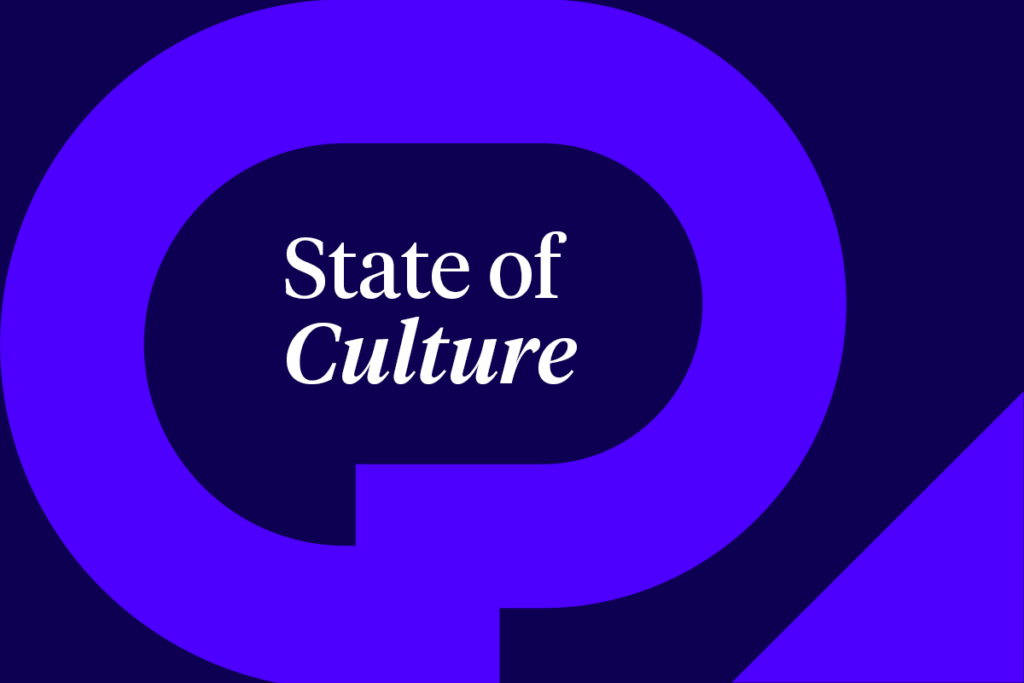This post originally appeared on Jessica Kriegel’s LinkedIn. To subscribe to her every-Friday newsletter, also on LinkedIn, go right here.
I came across this article from TIME recently: “It’s Harder Than Ever To Care About Anything.”
It’s similar in some ways to this Adam Grant article, which was the most-read article on The New York Times in 2021: “The Word is Languishing.”
Both articles are describing the weird emotional context, both personally and professionally, since COVID. The term Grant uses is “languishing,” and the first article talks about being asked to care about everything, which paradoxically means you start to care about very little truly, i.e. everything becomes almost nothing.
You see this with #leadership too, and especially in the senior leadership ranks. For years, senior leadership teams predominantly cared about:
- Revenue
- Growth
- Pleasing investors
- Market share
Obviously that was a bit myopic, but their focus was essentially singular. In the last five-10 years, though, executive teams have had to formulate viewpoints and approaches on all of the above plus:
- Social justice
- Racial dynamics
- The future of the planet
- Employees’ sense of belonging
- Land usage and reclaim
- The bucket of diversity acronyms
- Etc.
I am not letting senior leaders “off the hook” or anything here. They need to care about a variety of things, and they are compensated in such a way that they should. I can also tell you, and this is a great thing, that most of the executives we work with at CULTURE PARTNERS do really care about these things. They want good financial returns, but they also want to be good stewards of the planet and take care of their people and everything else.
The thing is, there’s a reality to the structure of a day — and often the revenue and growth discussions float to the top of each day’s agenda, or certainly across a week. To other employees, it can feel like executives are lip-servicing these big, important topics.
That’s part of what drives this professional languishing, or the feeling that there’s so much your organization could be doing for the world with its monetary resources — and some days it feels like all they’re doing is making more money.
So what’s the solution here? Do we go French Revolution-style on the current executive class and toss them out with pitchforks? Or do we just grin and bear it?
Neither.
Part of the problem with modern white-collar work and #culture formation is that a lot of people, from the top on down, are unclear on priorities. You see versions of this all the time: an executive is line-editing tweets at 7pm (why?) or an execution-level worker is spending three days on a spreadsheet that no one will read and could be automated in 22 seconds. There are not clear buckets often around who needs to focus on what. Let me try to define those:
Executives and founders: They should focus on growth, revenue, investor relationships, and new partnerships. They should weigh in on big societal issues as they feel it’s relevant to their business operations, but it doesn’t need to consume the majority of their month.
Middle-level people managers: They need to co-creating strategy with executives, and if they prove capable there, that can help them get advanced. After the strategy is developed (and ideally is not pivoted every six months), the main role of a people manager is to contextualize the bigger picture (strategy, mission, purpose) into daily tasks and responsibilities. This is the connective tissue between the executives and the workers. If you do this well and show signs of strategic ability, you should become an executive.
Middle-level individual contributors: You see this a lot in sales and engineering, plus a few other departments. These people, since they don’t manage others directly, should focus on relentless execution — and being informal mentors to junior employees when appropriate. But the main goal here is to work hard and advance organizational needs, since you opted out (or got opted out) of managing others.
Execution-level workers: Focus on tasks, deadlines, and responsibilities. Do your best. Keep your head down at first and learn the cadence and processes. Over time, ask for and receive more autonomy. If you’re good at the task and deadline level, you move up to either an IC or a people manager. If you move up to people manager, we train you on how to manage others and we work with you as you initially stumble.
If we clear up some of the priority hurdles inside organizations, we can get more clarity on who should be doing what, which makes the culture piece more logical and reduces some of the languishing and malaise.
Admittedly a lot of problems of burnout and stress and mental health challenges inside organizations are the result of bad management, and that shouldn’t be sugar-coated. The reason for bad management isn’t always simply because people are a**holes. (Sometimes!) It’s usually because people weren’t trained and they don’t know what their role is — are they supposed to manage up to the executives to look good to them, or define the executive piece down to the employees? That isn’t made explicit to many managers, so they stumble trying to please multiple masters.
When we work with clients at Culture Partners, we try to nail this priority piece right off the bat. What we do is — talk to the executives and the high-middle managers, and ask them for three metrics of relevance. These can be revenue-related (but not all should be), people-related, ops-related, etc. Just get three metrics that everyone should be aware of, at all levels, even if you don’t directly touch that metric. Report on those metrics weekly if need be. This starts the ship in the right direction. OK, so we’ve got these three metrics, which are core to everything we do and we mention them constantly. Now you have a sense of priorities.
The next step (and it’s never quite this easy) is for managers to go actually talk to their teams — not via software — and say, “OK, these are the priorities and this is what our team does. Let me explain the connection between the big picture and our daily responsibilities.” The manager should do this with their team as a whole group and as individuals. Again, now you trickle down the idea of priorities.
Over time, this shapes a culture where people feel moored to a few key things about their role, and know how they can advance to another role if they want. They spend less time worrying about everything because they have some clarity and purpose around 2-3 key things about their role.
More priority = less languishing and malaise.
Recently, we’ve heard from a lot of executives that they’re concerned about the pace of work that many employees use. It’s slow, and things they want to be done in 1-2 hours will take a week. Part of that, again, is a priority.
We need to focus on teaching managers to double down on priority and teaching workers how to work with pace.
If you haven’t clearly set priorities and worked that through the people management level, then some employees are getting pinged by six different managers asking for different things, and three of the pings have context and three don’t. Because the employee is just trying to survive in what’s potentially an “at-will” environment, they jump on all six things, even though maybe 1 of the 6 is a priority to the highest rungs of the organization. The pacing issue is an issue of priority confusion. You solve it by being better at these steps.
We did some research recently with Stanford University studying 243 organizations (with more to come). The biggest finding so far is that financial performance has very little to do with “strategy,” and much more to do with “culture.” Why is that? A lot of reasons. For one, often executives are describing logistics when they talk about “strategy,” so the word is poorly defined. But beyond that, a culture describes HOW you work and how different experiences shape everything else.

Ultimately that’s much more important to financials than some strategy Powerpoint.
Focus more on priorities and you get better cultures and better experiences and better results.
Your take?




